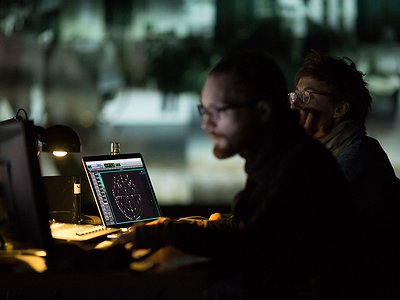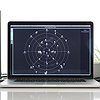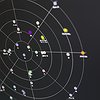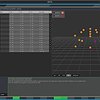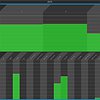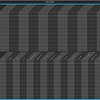Names: Benjamin Schulz, Johannes Scherzer, Lukasz Polowczyk
Interviewee: Lukasz Polowczyk
Company: MNTN
Nationality: Polish
Product: MNTN, a software for creating binaural 3D audio mixes for headphones, 360 VR videos, and immersive sound installations with up to 64 loudspeakers.
Website: https://mntn.rocks/
You're not 'just' software developers, but sound artists in your own right. When did you start writing/producing music - and what or who were your early passions and influences? What what is about music and/or sound that drew you to it?
All of us ended up here through our love for either raw sound or music. Joe started with film sound design and then fell head over heels in love with immersive audio when he finally discovered it. Ben has been making house music for a minute, and also has a few sound related apps under his belt as a programmer. Myself. I'm a spoken word artist. I came up with the first wave of Berlin Bass music in the early 2000s. Although our experiences with music or sound might appear to be a bit different – at least superficially – what unites us is that we truly believe that the next step in the evolution of sound design was made possible through the arrival of 3D / immersive audio.
How do you see the relationship between the 'sound' and the 'composition' aspects of music? How do you work with sound and timbre to meet production ideas, and in which way can certain sounds already take on compositional qualities? Connection between sound, space, and composition?
I think that post John Cage the distinction between pure sound and what was formerly understood as pure music was obliterated. And then, in the 70s, the studio became a real instrument and not just a way of capturing live sound. Defining space, working with it as an aspect of the actual composition, as well fine-tuning and sculpting individual sounds became a norm. I think that we take this for granted now since it's so ubiquitous – sound design is air. But if you pay attention, even seemingly pure recordings of acoustic music are heavily treated from a sound design point of view. I guess, the shift was accelerated with the advent of desktop studios; because when you work in a home studio you're not really recording a sound of a room; most of the time you have to create this in post. What's happening with 3D audio is that now you have way more possibilities to work with the space itself and music in relation to it. 3D audio also allows us to transpose this high-level film sound design language to music. I think we are at a new frontier now with a lot of unchartered possibilities in regards to sound design. Recently, I heard a piece by Valentin Schwarzbeck on a 15 speaker set up from HEDD AUDIO and, for the first time, I heard how you could apply some of the ideas intrinsic to Dub to an immersive piece. It was mind blowing hearing sound literally rippling through the room, like water.
Was there a particular event which triggered you to start developing MNTN?
The motivation for creating MNTN was simple: we wanted to make this audio technology available to anyone producing music, who would be curious enough to use it. We want to do for spatial sound and immersive audio, what Ableton did for home studios and live music. Previously, you had to rely on hardware for multi-channel setups. Some of these processing units can run up to 40k. I don't know any artist that would spend this type of money. That's a mini-van. That's a lot of analog gear that you always wanted to have. That's a decent annual income, especially if you’re working in the arts. With this technology being so expensive for so long, you really couldn’t cultivate a scene because most artists simply couldn’t participate. And, not only that, very few festivals or clubs would support a multi-channel performance space. It's a no brainer that the most interesting things in art come from the underground up. We want to hear what artists will do when they put their hands on 3D sound. In my 20 plus years in music, I saw how sound design had jumped a few generations, and also how some of these ideas spilled over into the mainstream. As far as you can push the stereo format, it still has its preset limits. What you hear at cineplex, when you go to see an action film, that's not possible in stereo. I want to hear this type of madness times plus – infused with music and amplified by artistic insanity and risk taking and, if need be, by helpful substances – in people's productions.
What was the development process for MNTN like?
MNTN was designed to be easy to use. Joe and Ben decided to strip it down to the essentials. The functionality at its core is literally as basic as moving an icon across a grid on your screen, and that icon corresponds to one track in your sequencer which, in turn corresponds to a sound object moving through a physical space. It's harder to explain MNTN than it is to actually use it. When we debuted it at Ableton's LOOP we let people upload their own stems and play them on a multi-speaker setup. Everyone that tried it there was blown away by how easy it is to use and also by the effect that it produces. Now, we're working on making MNTN a drag and drop app. Right now the initial set up is a bit of pain in the ass, but it's still one of the easiest ones out there.
After we sort that out, we're gonna start adding some presets, effects and automation options. We're taking notes now, listening to our users and compiling a wish list. Anything you guys need, just let us know.
What were the most challenging aspects of the process?
Figuring out how to represent a 3D space in 2D was a bit of a riddle. Making sure that MNTN is stable enough for live performances, that was something to crack. Figuring out what to keep and what to leave out regarding functionality, that's always a huge thing in design. I think that we're facing the biggest hurdle at the moment with making MNTN a plug and play tool, but we're pretty much there.
Although the software is now available, I'm sure there are still plenty of challenges ahead. Could you take us through a day in your life, from a possible morning routine through to your work? Do you have a fixed schedule?
We're a small operation. We’re only three people. Joe is the captain of the ship and also the visionary. He comes from 3D audio and has been working with the idiom for a minute at his sound scenography studio TAUCHER. He's also the spokesperson and the business development guy. Benjamin is our 30 programmers packed into one body and a pair of hands. And he really is that prolific and programs with the passion of a musician or a beat maker. I handle publicity, sponsorships, cultural outreach and make sure that interesting people make interesting things with MNTN. We're fighting to get festivals such as LOOP, Mutek, Sonar, and CTM to always feature a 3D performance space. A lot of them still look at having a 3D performance space as the event itself. But it’s not, it’s just a format. It’s what people do with it that matters. And without the inclusion of 3D sound at such events, the scene cant’t grow. Also, at the moment, we sponsor a lot of institutions and artists. I think we're already sponsoring something like 160 plus organisations and creatives. Not only are we fighting to get the word out about our software and getting the menial everyday stuff out of the way, but we’re also trying to create an infrastructure that will make this format as accepted and readily available as stereo, in the right contexts, of course.
How would you describe the move from a 2-dimensional stereo image to a spatial 3D sound?
It's a bit like going from weed to LSD. The possibilities are multiplied times-fold. You're no longer bound by a single axis. Now sound can, if you approach it in the right way, acquire almost tactile, physical properties. On occasion, producers have arrived at something of a 3D design using stereo, but the effect was limited to a sweet spot between two speakers. We're opening the gateway for the underground to be able to make Hollywood blockbuster level sound design, but minus all the kitsch and the need to please a mainstream market.
What, concretely, can users do with the interface? Could you describe the creative process for MNTN from a project that's particularly dear to you, please?
The reason I'm working with MNTN right now is thanks to the fact that Joe had helped me with the sound design of a performance that I had at CTM with a project called IZZJAZZ. It was an immersive spoken word / experimental electronica sort of a thing, with live drums and cello. We had a 16 point system with a couple of subs and overheads. The audience was standing in the middle of this speaker set up. The idea was to create this movie like soundtrack and spacial design – with the narrative (however broken) being driven by the voice. All instruments and the vocals could move around, over and through the audience. The more drone-y, ambient textures could flood the space like a smoke from a smoke machine. The drums and percussive artefacts could fly around the room. Having all these possibilities for the first time really blew my mind. In a way this experience was just a micro-dose, we just scratched the surface, but this opened the door to a new world for us. With the next iteration, we will take it a step further.

